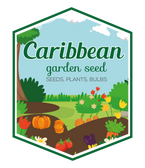
Saffron Plant Bulbs - Rare Spice ,Crocus Sativus, fall bulbs
FAST & FREE SHIPPING
Over 90% of our orders are processed and ship out by next business day.
We are currently processing and shipping most orders within 1-3 business days. (backorders not included) Due to high demand during the peak months of January to May, orders may require additional time for packaging /shipment.
Free shipping for orders over $54.95. Excludes live plants, fresh products And Stackable Black Plastic Nursery Crate
Shipping and handling charges will cover outbound freight and packaging materials. Fees are applicable to all orders, based on total order value pre-tax. Expedited services can be selected at Checkout with extra fees.
- Free shipping to lower 48 states on orders $54.95+
- (Most Items), excluding live plants, plant bulbs, and black plastic nursery crate.
- Safe Seed Pledge
- Satisfaction Guaranteed
- Select your desired size and/or color from the available options.
Saffron Crocus Bulbs - Rare Spice - Crocus Sativus ,Grow One of the World's Most Expensive Spice In Your Own
Saffron is costly due to its hand harvesting of thread-like filaments. Consider adding crocus sativus to your fall garden for sunny blooms in a well-drained area, even if you don't plan to cook with saffron.
PLEASE NOTE:
Plant the bulbs as soon as they arrive so you can harvest the saffron in the fall. These beautiful purple crocus bloom in the fall but should not be confused with the autumn blooming crocus (crocus colchicums) which are not edible. Saffron_ Crocuses
Discover the joy of cultivating your own saffron supply from the rare Crocus Sativus plant bulbs! Perfect for dishes such as Seafood Paella and Golden Saffron Cake, this highly sought-after spice blooms from September to October. Share the bounty with your fellow cooking enthusiasts!
I suggest you plant and mark the location of the bulbs because after the autumn blooming the leaves will disappear. You will need at least 20 bulbs for a first year harvest but if not all the bulbs bloom this fall just wait until next autumn for an increased supply.
To harvest saffron, visit the flowers on a sunny morning when the petals are wide open and pull the long red filaments or stigmas off with your fingers.
Dry the threads indoors and store in an airtight container. Add these to a cup of hot broth or milk and let steep for 20 minutes. Now you have golden saffron for paella and Indian food or add this golden broth to mashed potatoes for a Midas touch at the holidays.
Grow One of the World's Most Expensive Spice In Your Own Garden
(And remember, these babies flower in the fall, not in the spring with the rest of the crocus clan.)
Outdoor Beds
Choose well-drained soil. If there is excess water after a rain, find a different location. Add organic material to raise the soil level for better drainage. (e.g. peat moss, compost, ground bark, decomposed manure). Avoid waterlogged soil for best results with Saffron Crocuses.
Saffron crocuses need sun or light shade and prefer average moisture in the spring. If it rains a lot in your region, plant them under eves and water them in the spring.
HOW TO GROW GUIDE
LET OUR CUSTOMER SPEAK FOR US

![[Seeds] - Caribbeangardenseed](http://caribbeangardenseed.com/cdn/shop/files/gift-card-gift-card-1_1024x1024_dfa857db-9150-4315-a362-7f0bb3fb9c47_60x28.png?v=1722895789)







